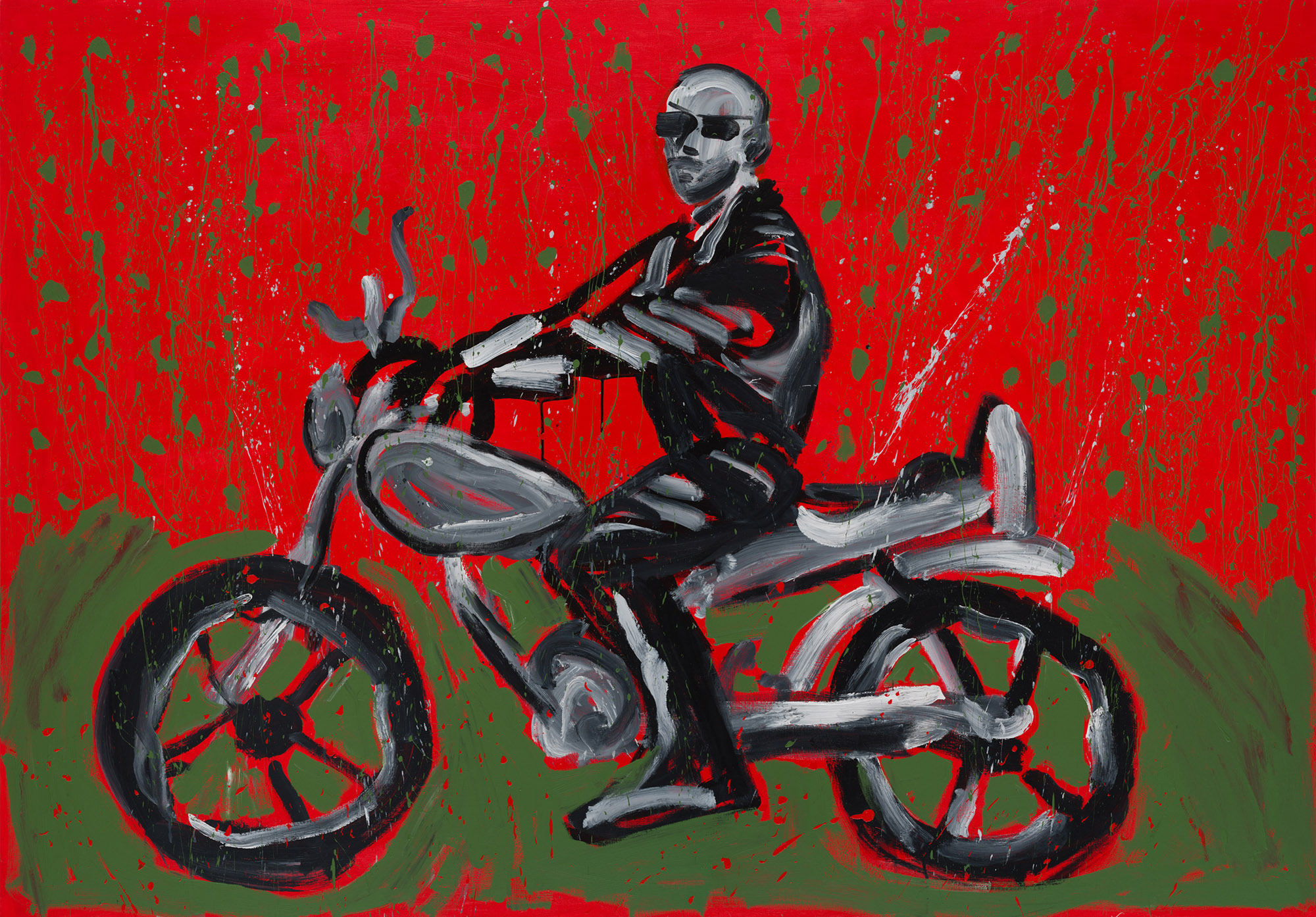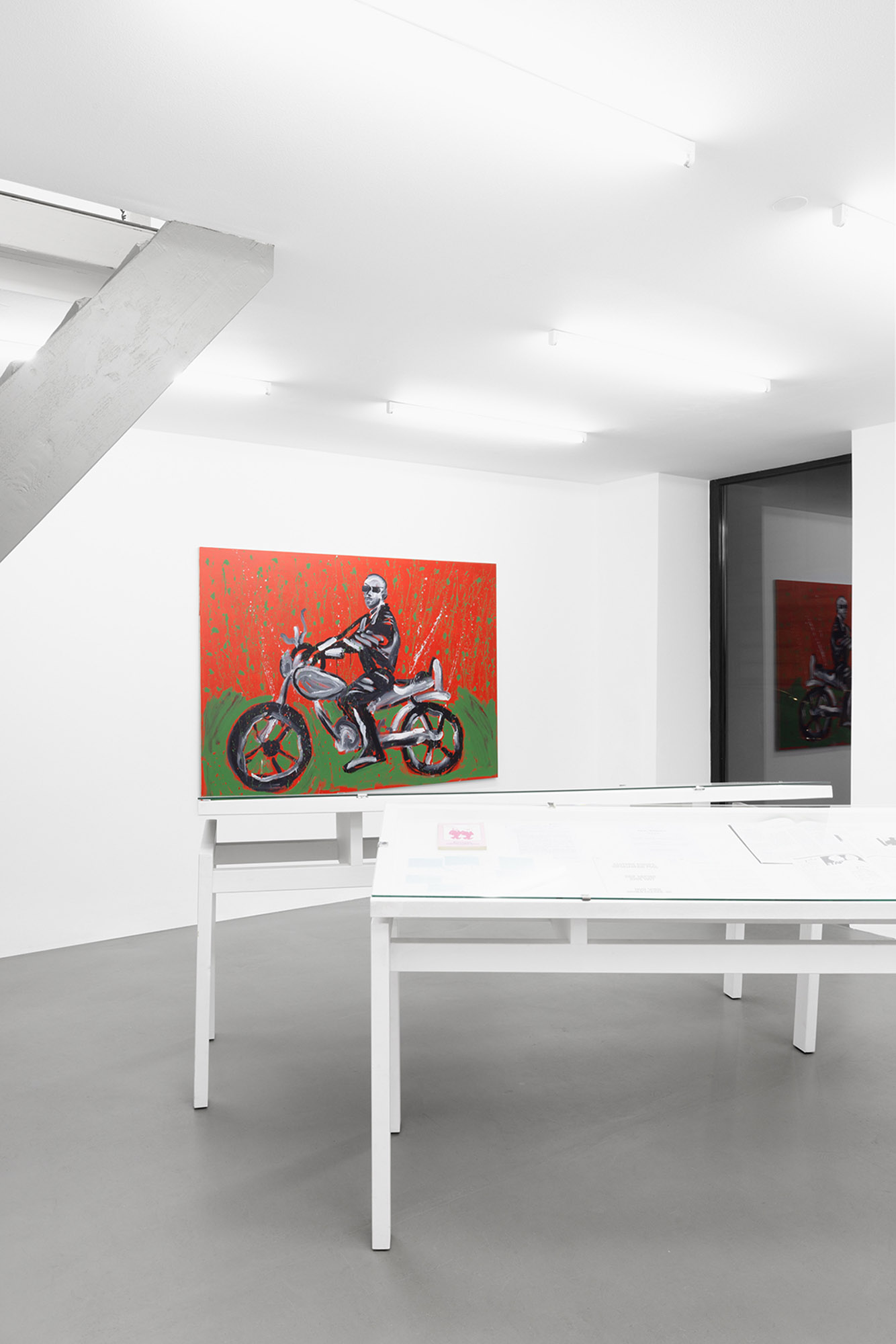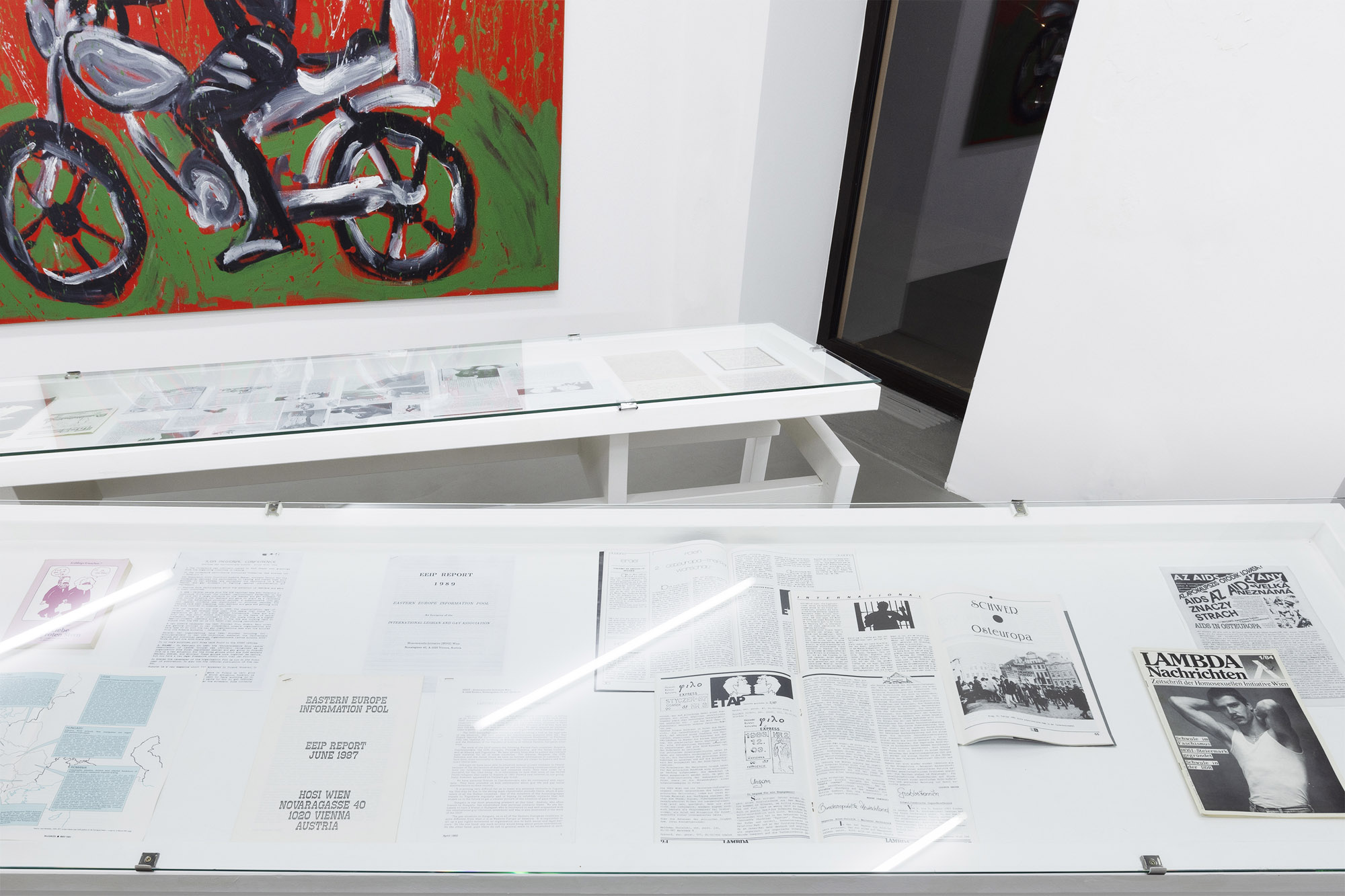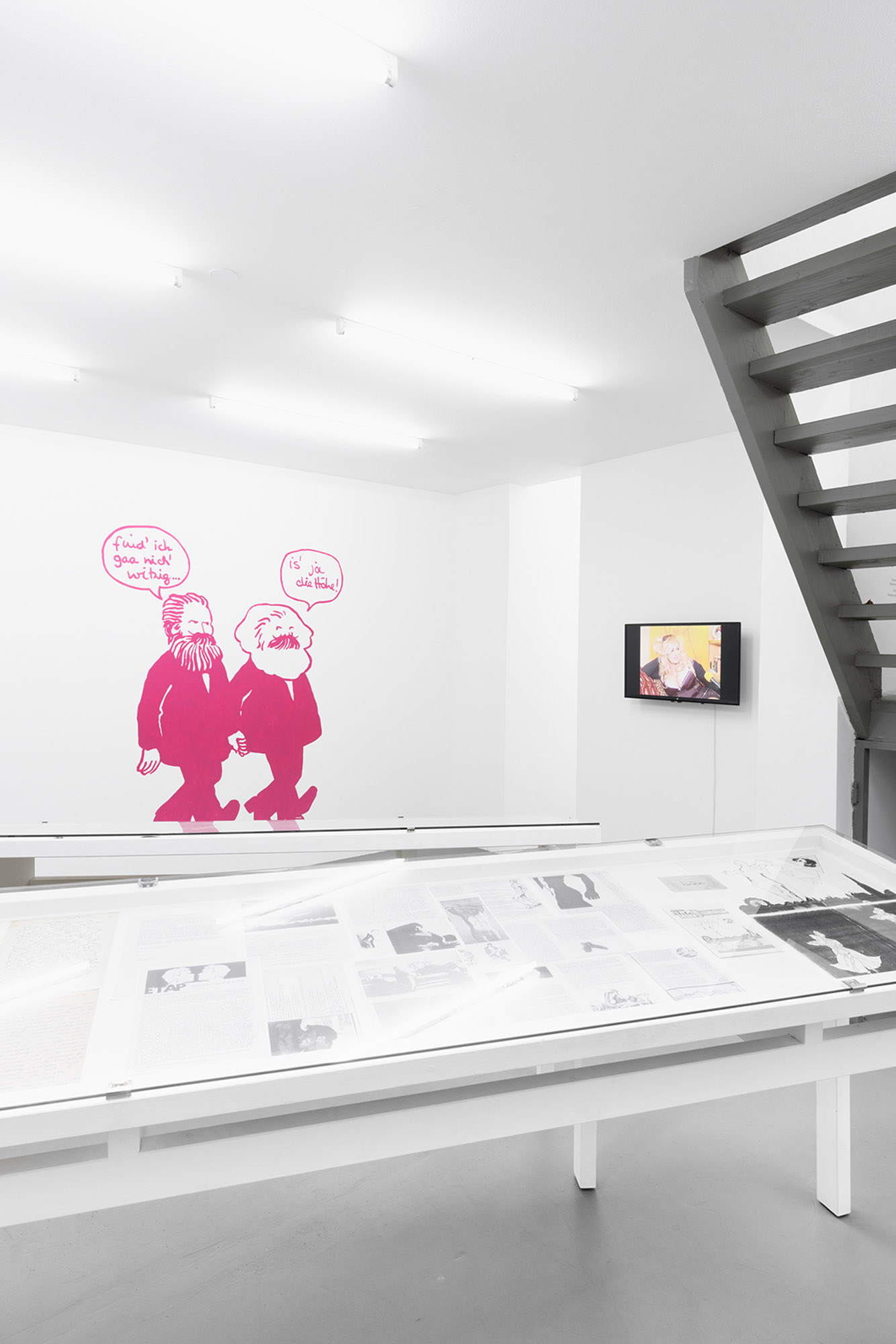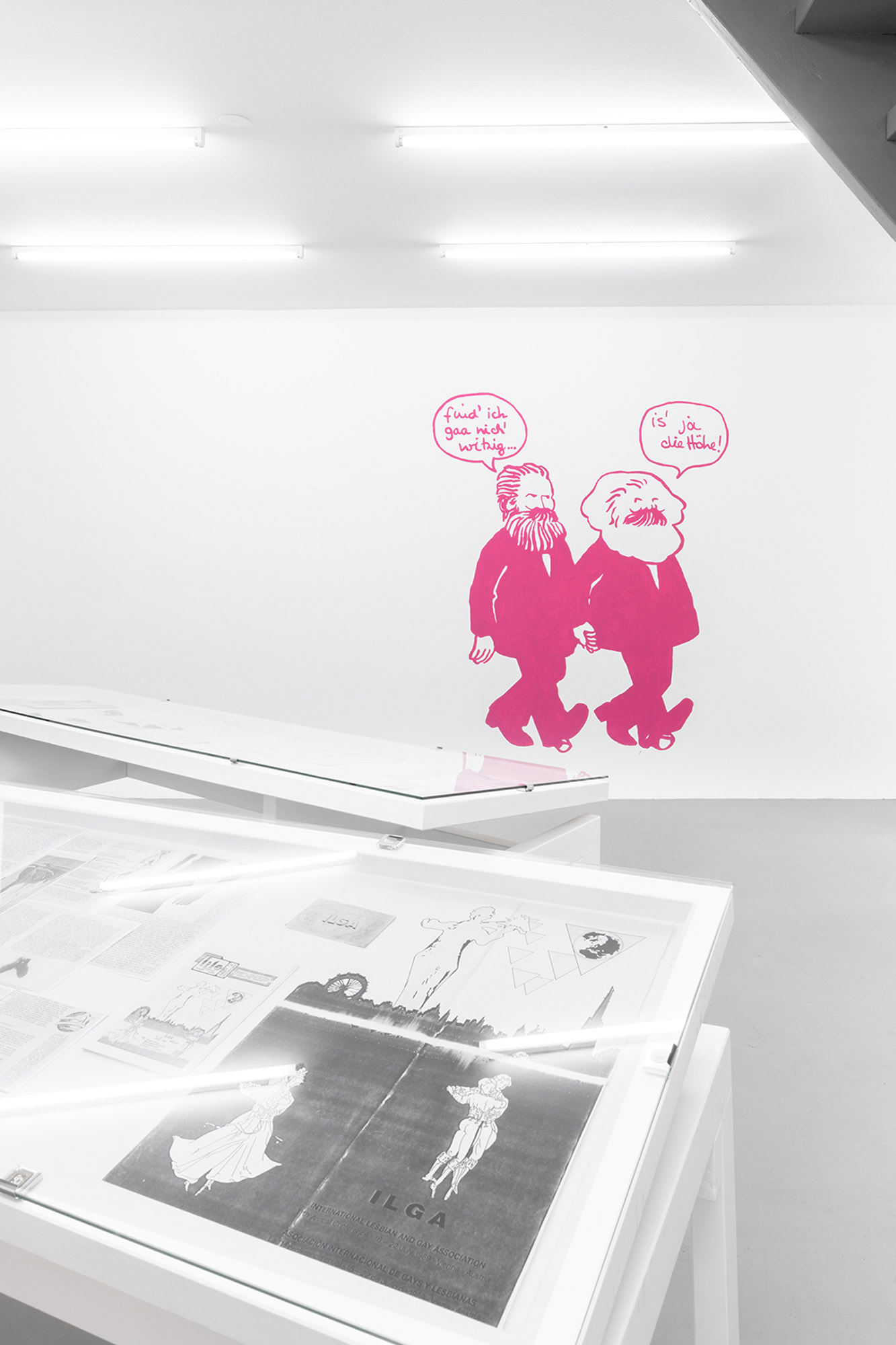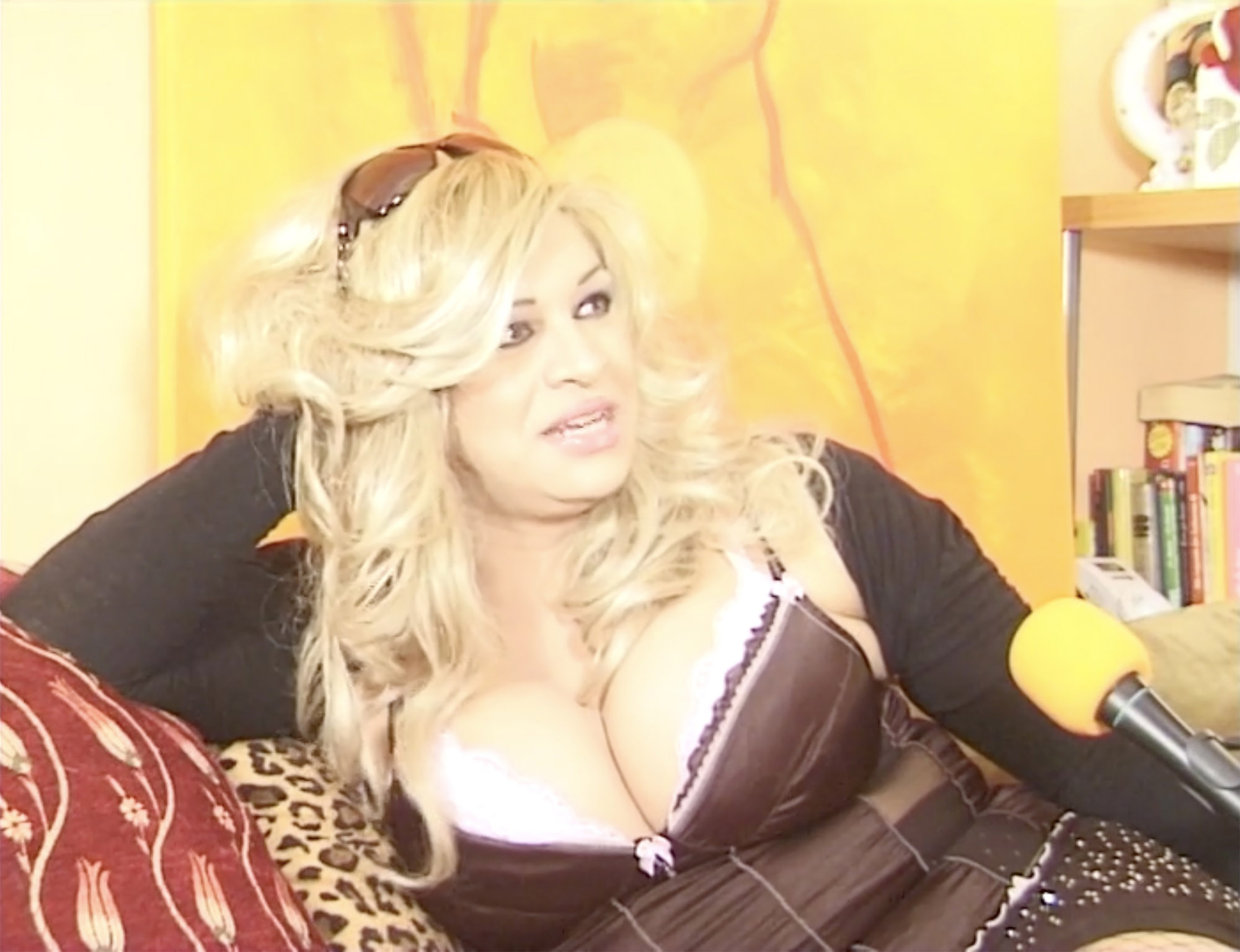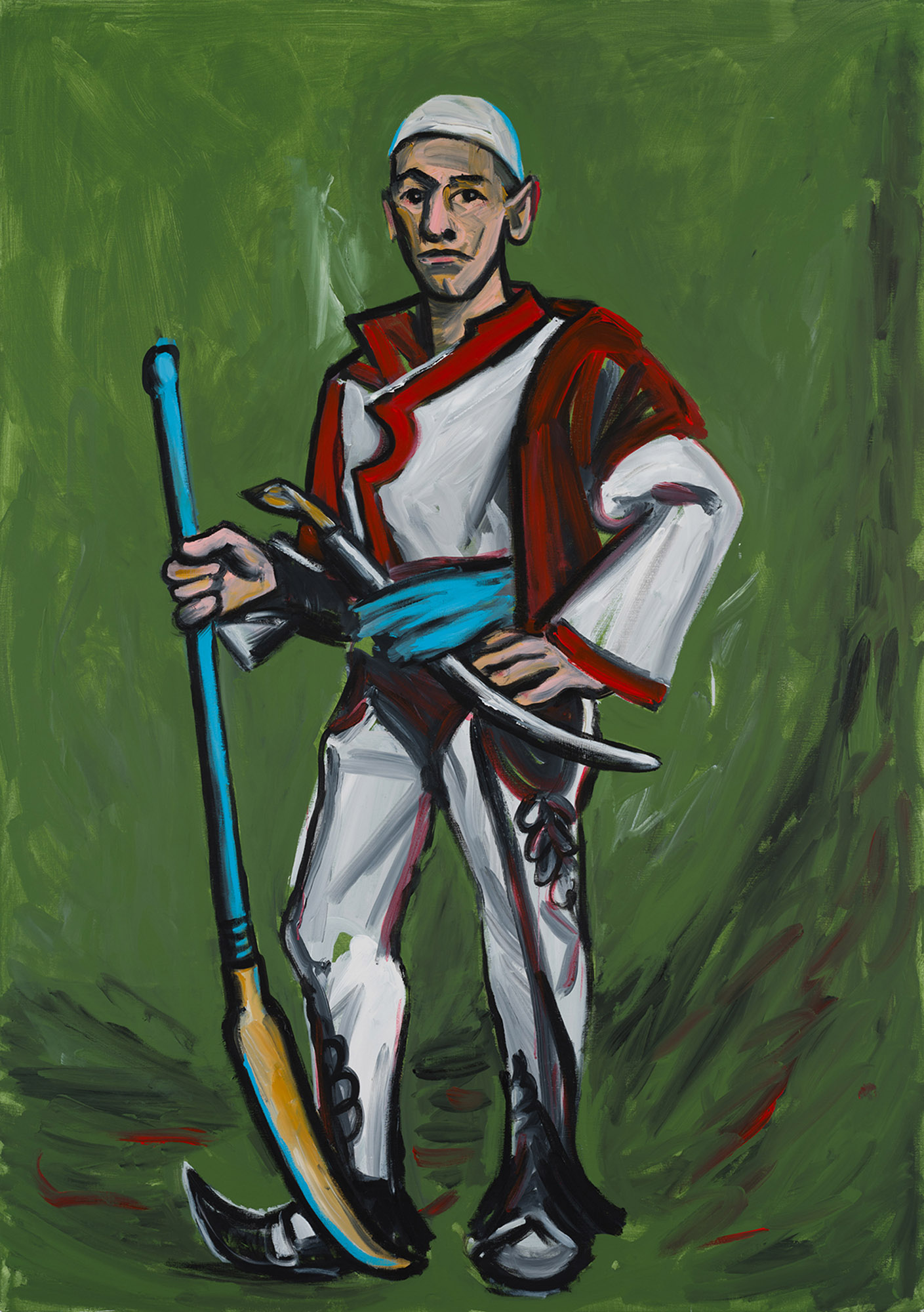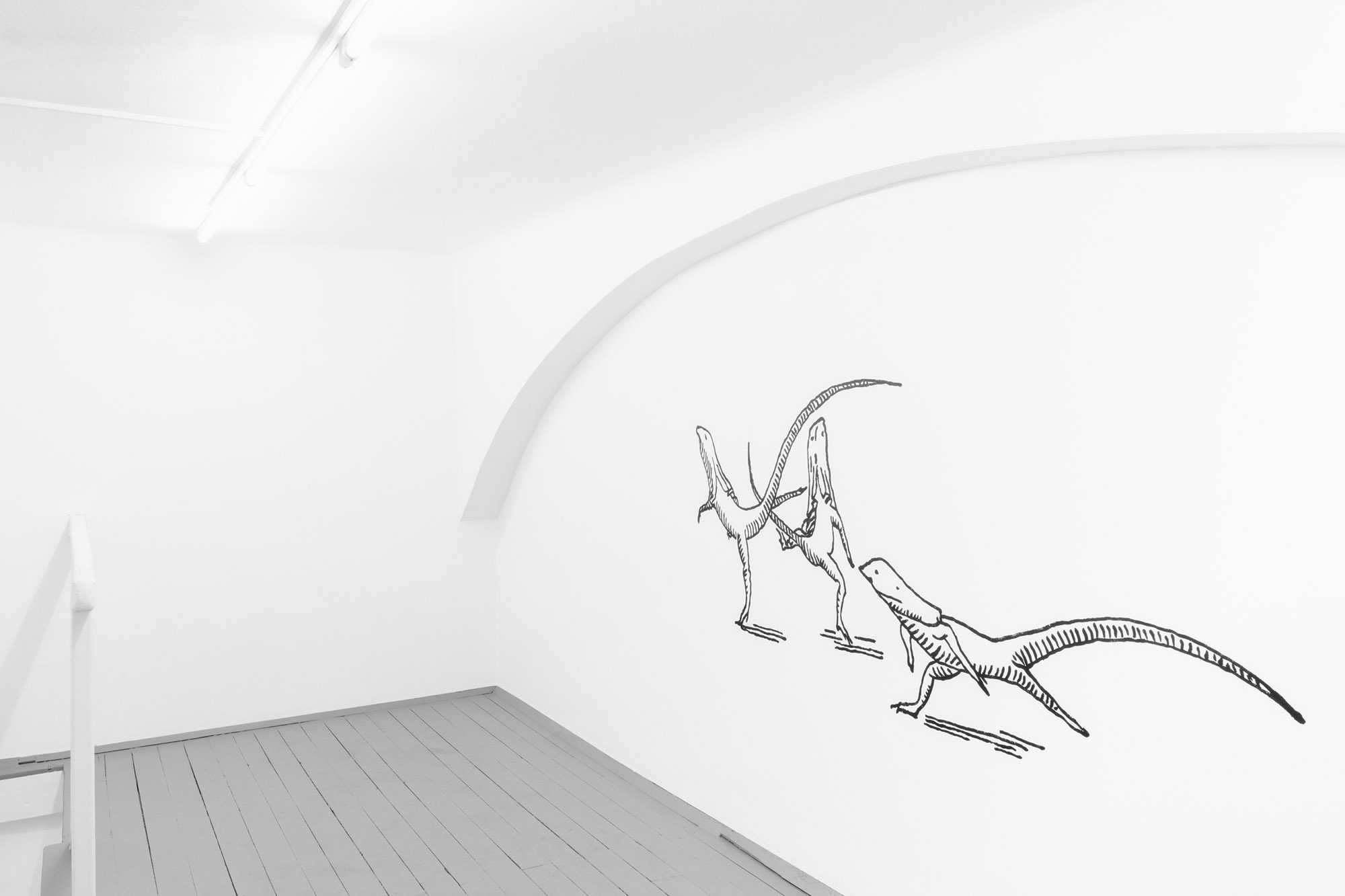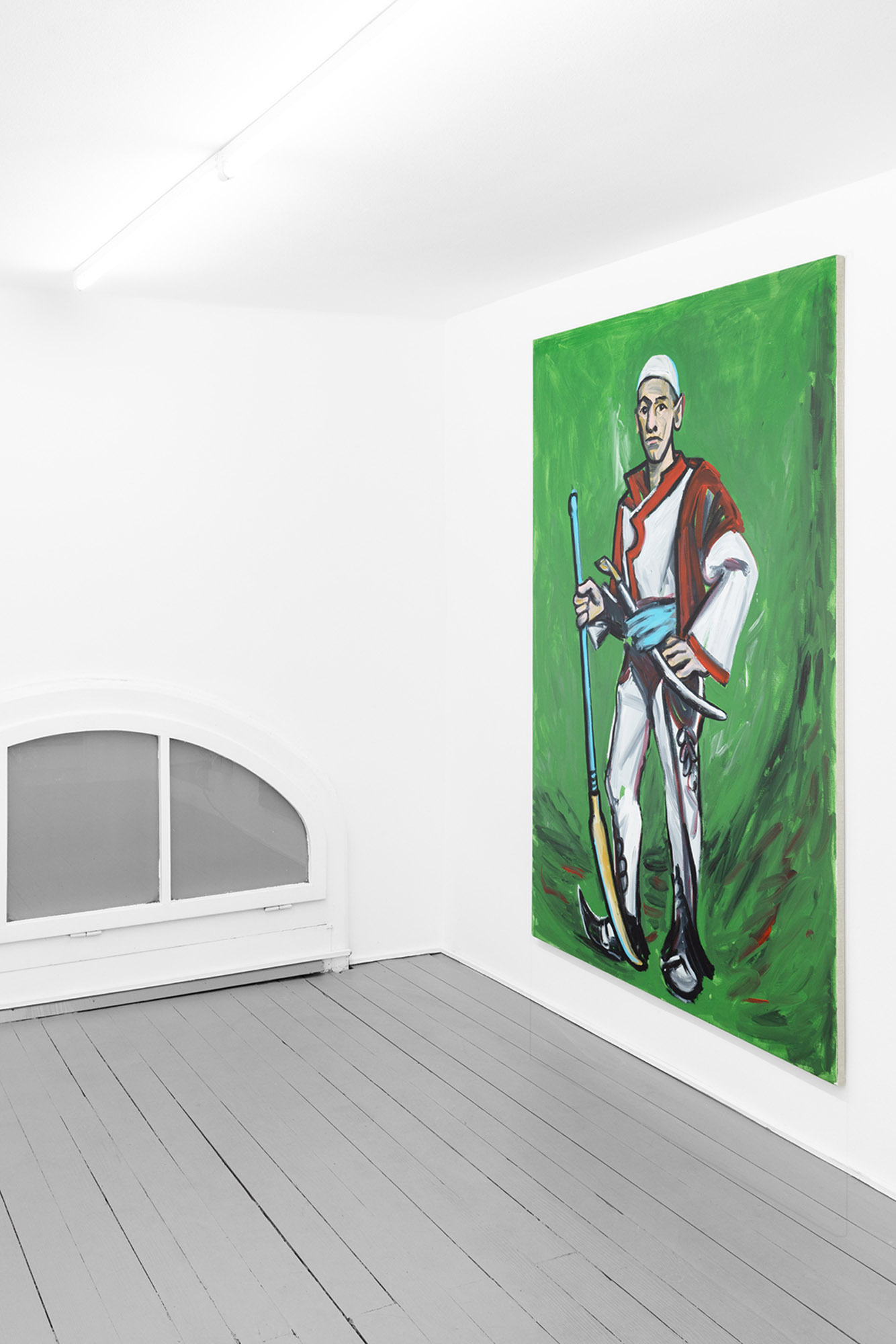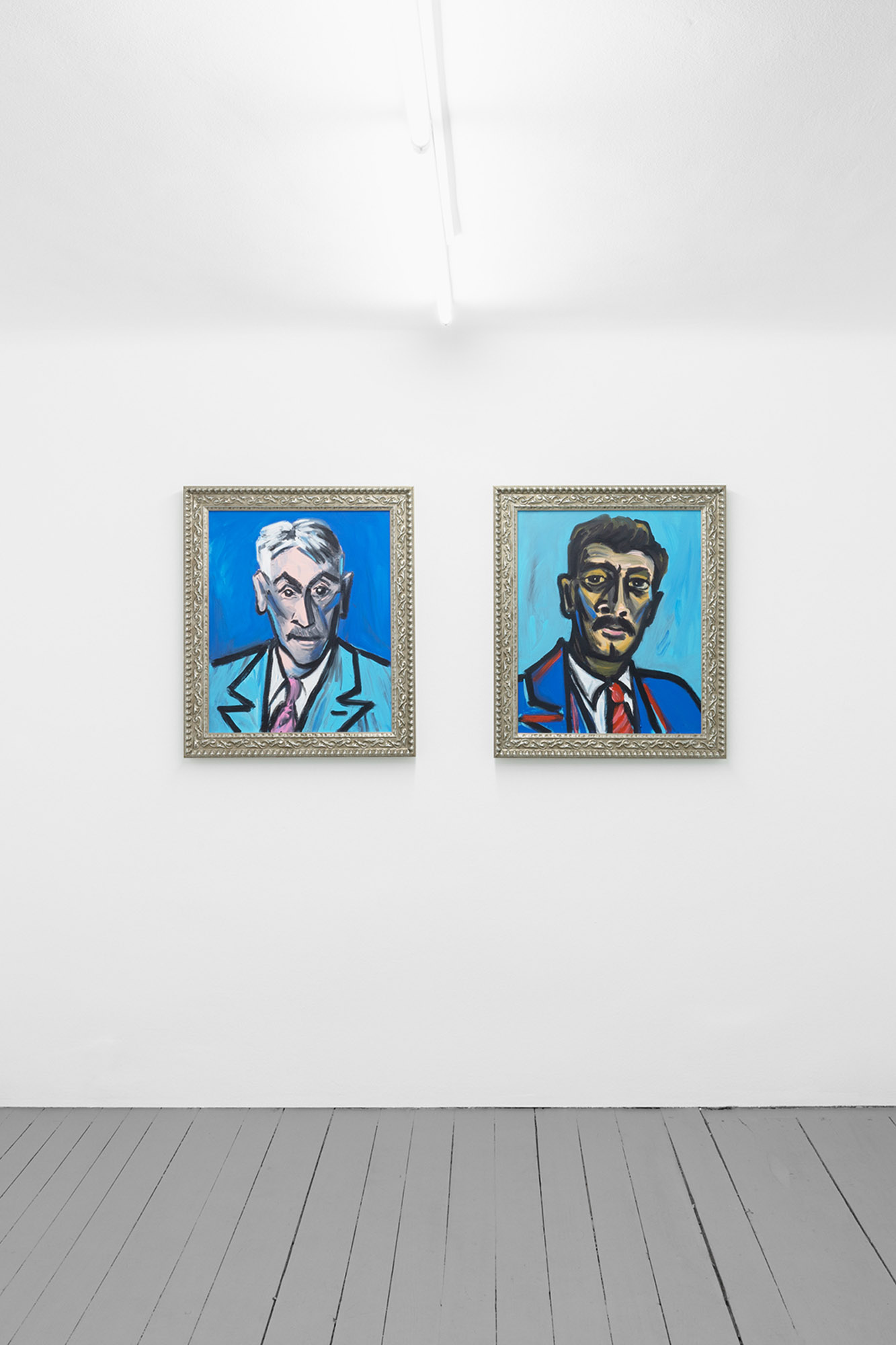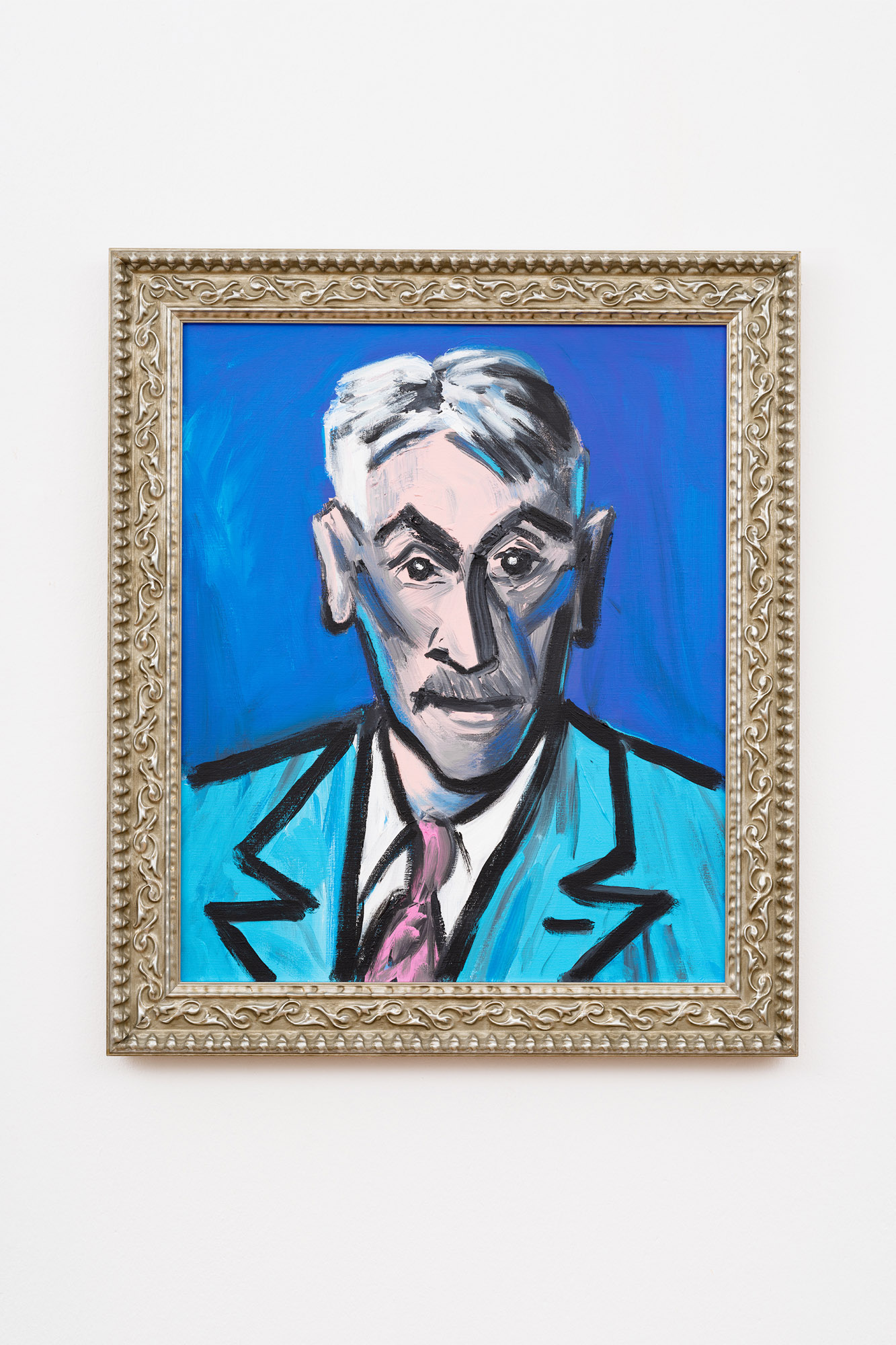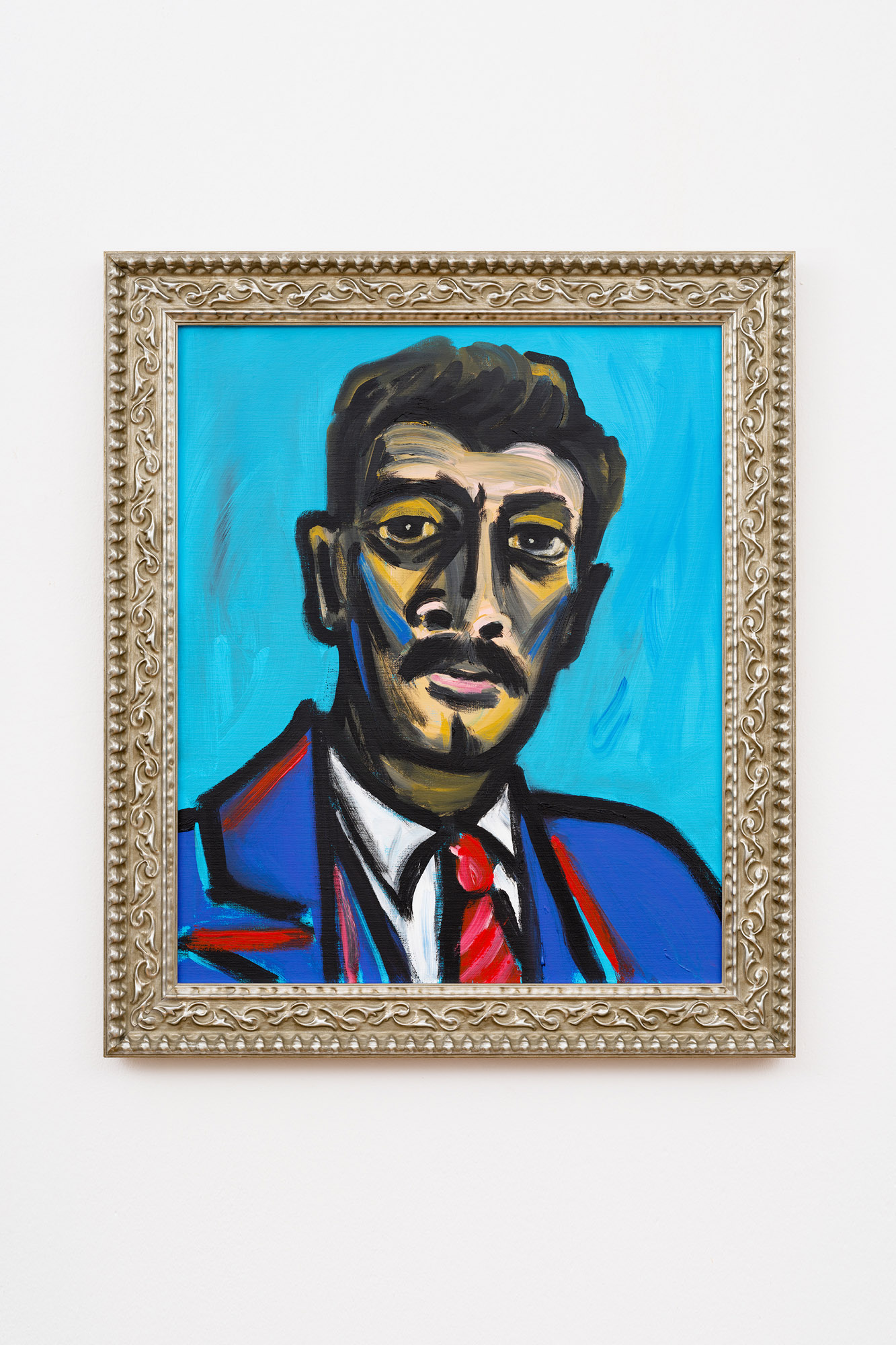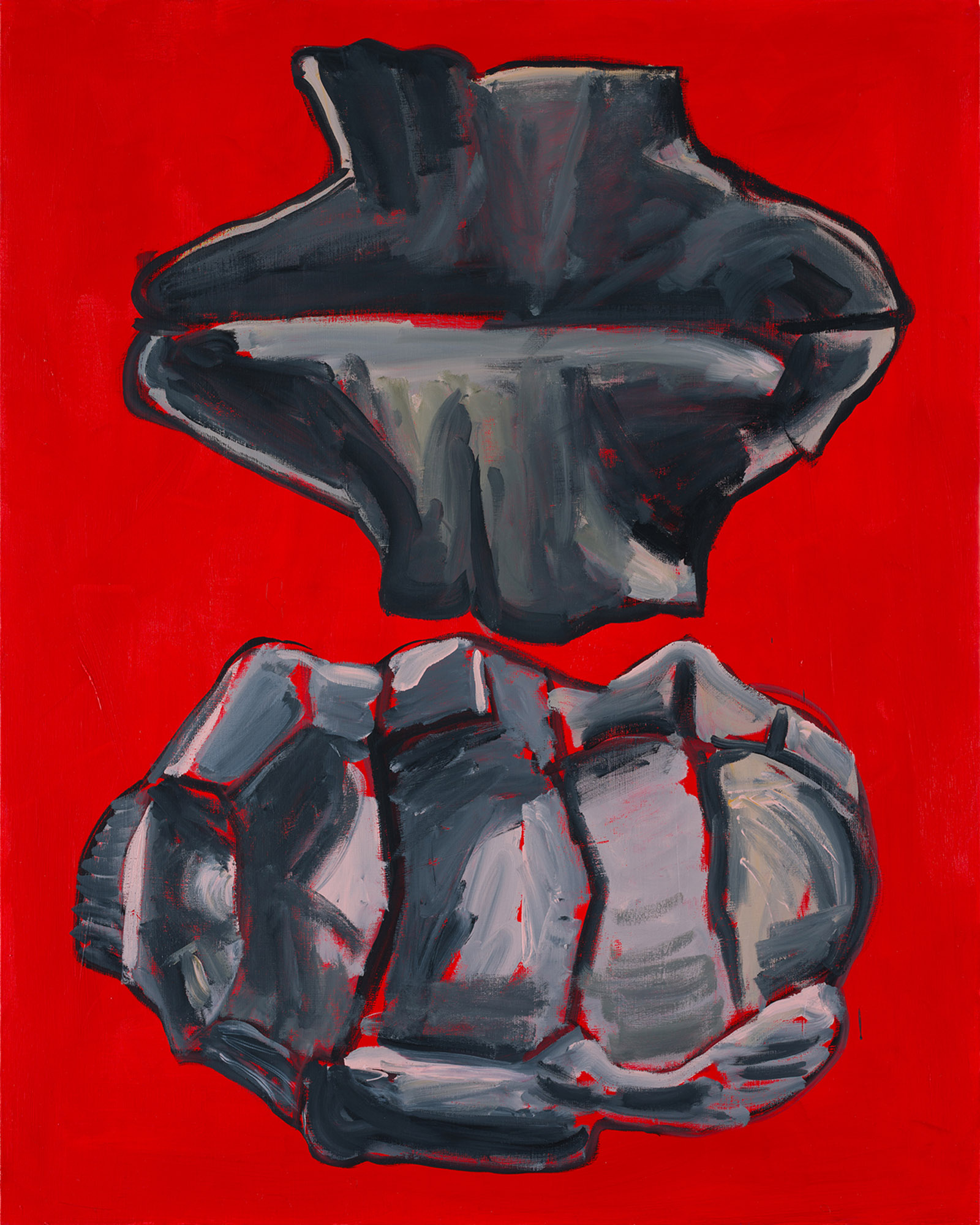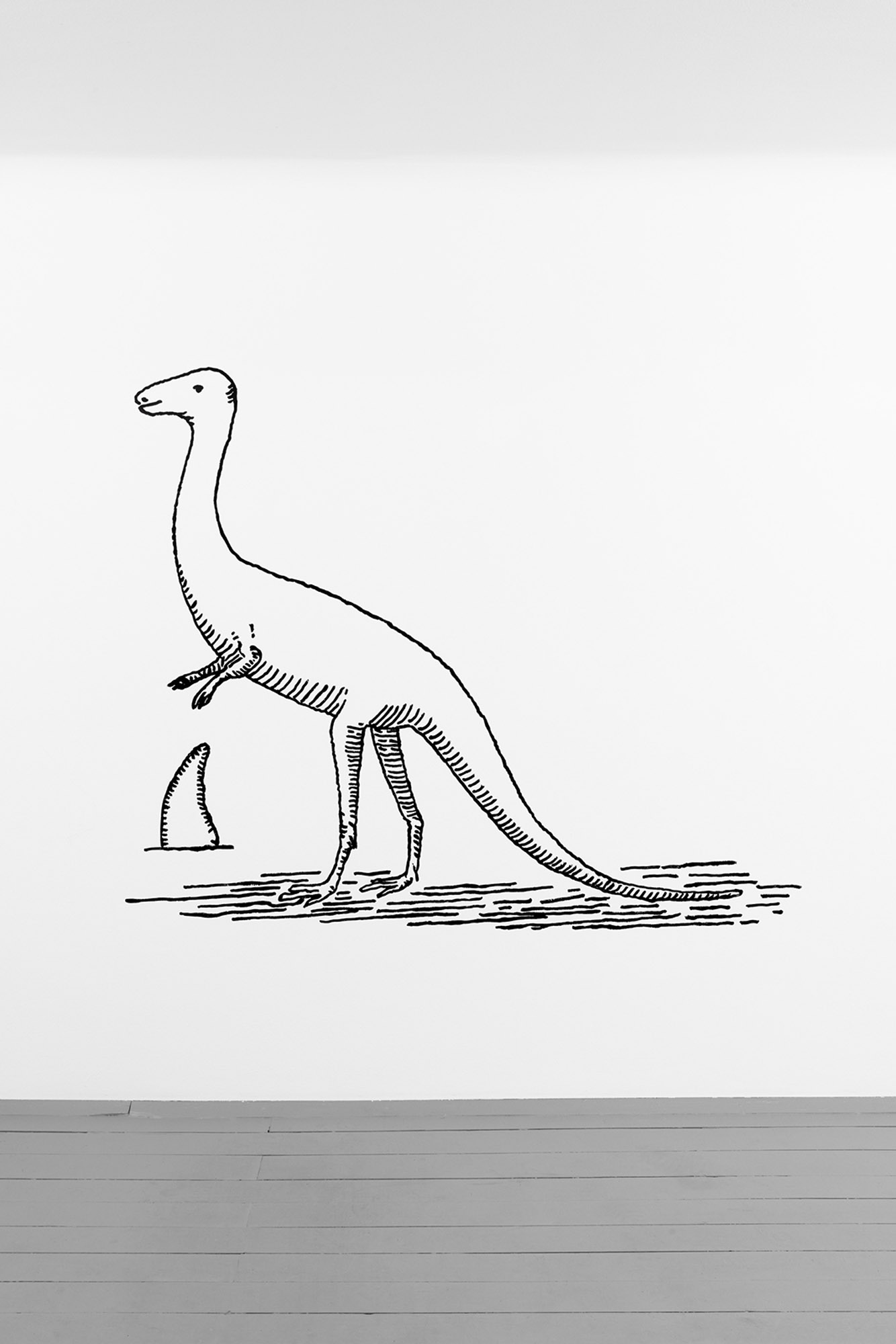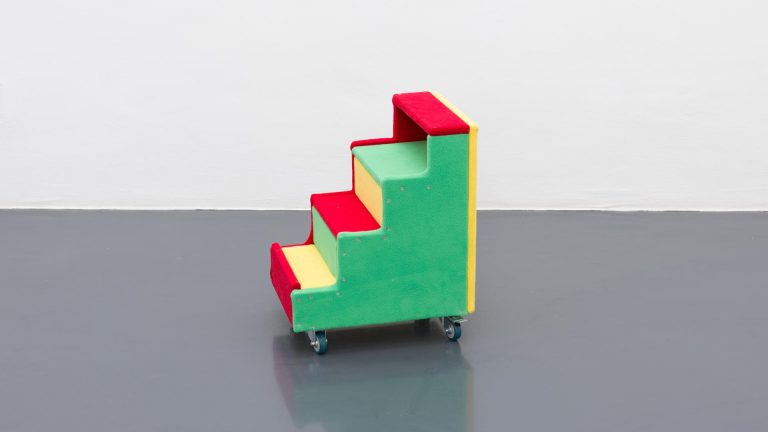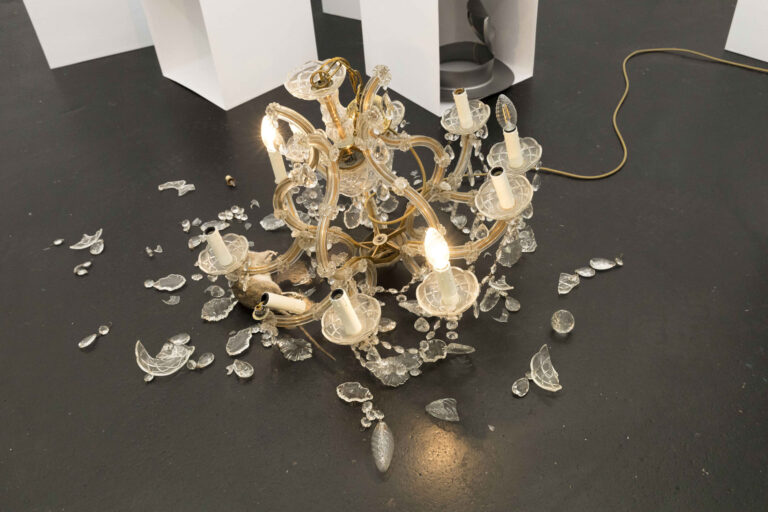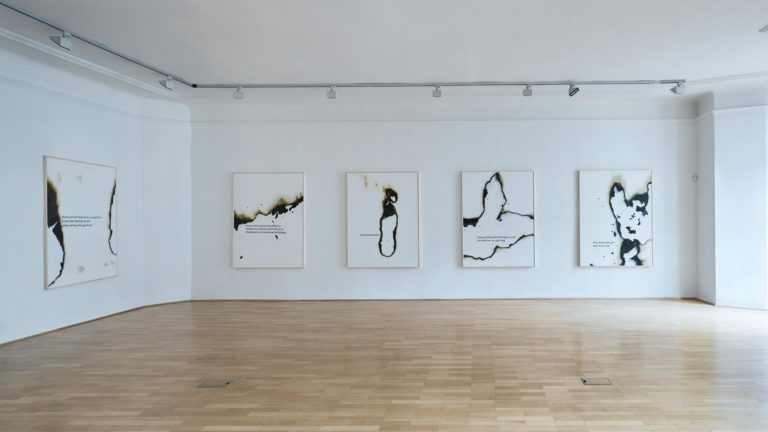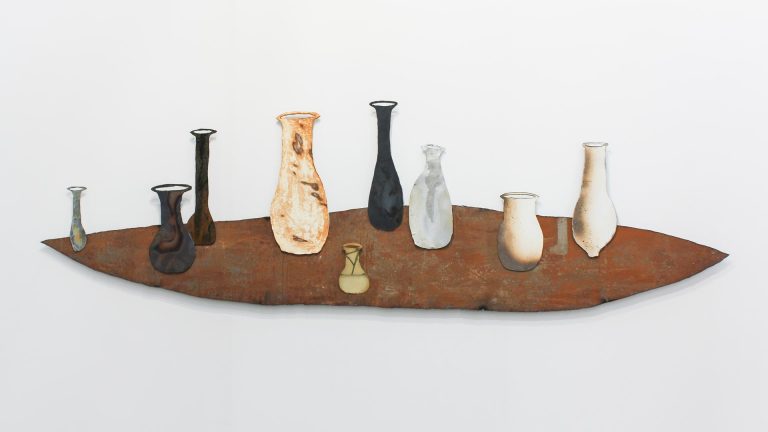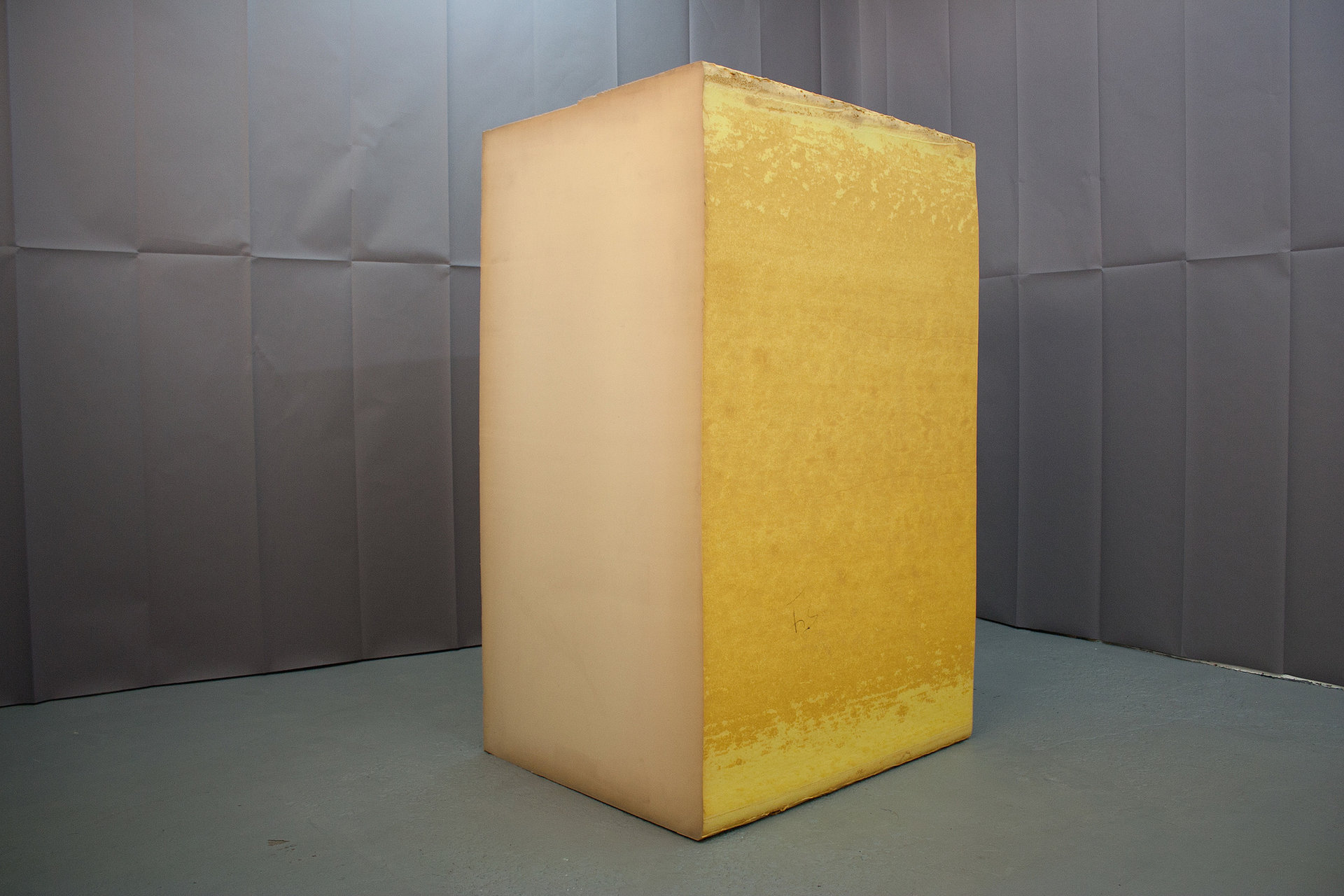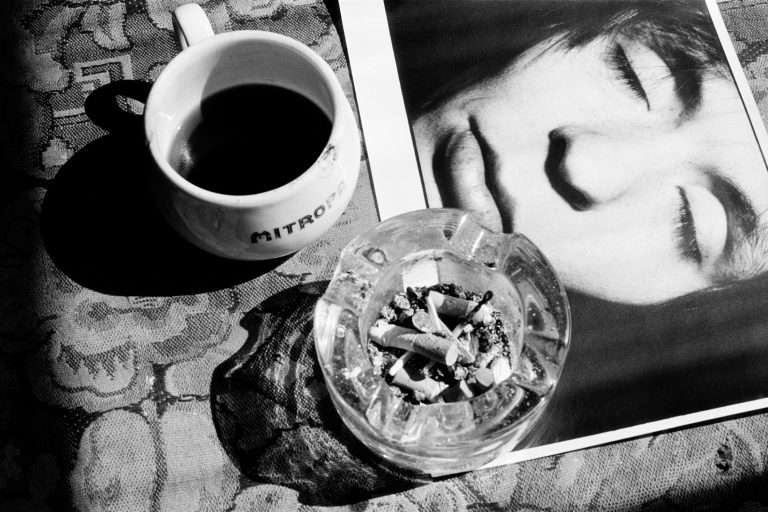Artist: Karol Radziszewski
Exhibition title: Ostreport
Venue: EXILE, Vienna, Austria
Date: October 29 – December 16, 2023
Photography: all images copyright and courtesy of the artist and EXILE, Vienna
EXILE is pleased to present Ostreport, the first solo exhibition of Polish artist Karol Radziszewski in Vienna. Continuing his research into queer historiographies, the exhibition brings together a series of new paintings and archival material gathered by the artist during his research for the 14th issue of DIK Fagazine—a periodical published by Radziszewski since 2005 with a focus on male homosexuality and queerness in Central and Eastern Europe. Dedicated to the city of Vienna, the most recent issue[1] of DIK reflects upon the city’s historical and geopolitical role as a gateway between Europe’s East and West, and traces a journey—from the Austro-Hungarian Empire to the 21st-century—across two floors of the gallery space.
The exhibition borrows its title from occasional columns and annual reports on homosexuality in Eastern Europe published by Austria’s lesbian and gay organization Homosexual Initiative Vienna [HOSI Wien] and its initiative Eastern European Information Pool [EEIP][2], informally referred to as “Ostreport” by some. While the contacts between HOSI Wien and organizations in neighboring cities such as Budapest were further consolidated with the establishment of EEIP in 1981, the organization also played a crucial role in the development of the Austrian AIDS Aid [Österreichische AIDS Hilfe] in 1985. A key figure in this context was the LGBTQ+ and AIDS activist Kurt Krickler who, in the 1980s, smuggled blood samples on a motorbike from Budapest to Vienna to provide anonymous HIV tests to members of Hungary’s gay community. Emerging from a brightly colored red background, Radziszewski’s large-scale portrait shows Krickler on his motorbike, honoring not only the protagonist’s remarkable engagement but also referencing the broad network and intense exchange between gay activists in Vienna and neighboring countries in the East.
A selection of archival materials in two vitrines testifies to the scope of publishing activities at the time and the transfer between Vienna and other Central and Eastern European countries. Featuring a number of publications by HOSI Wien, this first vitrine introduces the organization’s own magazine Lambda Nachrichten as well as a copy of the book Pink Love Under the Red Star. On the Situation of Lesbians and Gays in Eastern Europe [Rosa Liebe Unterm Roten Stern]. In addition, copies of EEIP’s annual reports make evident the initiative’s role in sharing information and providing a bridge for activists between East and West. In the second vitrine, copies of Etap magazine evidence how activist groups operated across borders: founded by Polish activist and former EEIP president Andrzej Selerowicz in 1983, the Vienna-based magazine was initially a one-page bulletin distributed in Poland. The people involved in distributing the zine in the Polish city of Wrocław later on formed an activist group of the same name—Etap. Letters sent to Selerowicz from gay people in Poland bear witness to the mutual exchange between queer communities in his homeland and Vienna. Another case in point is an issue of Polish gay magazine Filo published by activist and photographer Ryszard Kisiel between 1986 and 1990. One of its covers features a poster of the International Lesbian Gay Association [ILGA] conference held in Vienna in 1989 and organized with the help of HOSI Wien and EEIP. The materials presented in the vitrines also bear evidence to the artist’s longstanding methodology of excavating stories from queer archives (and other sources) including the LGBTQ+ organization Lambda Warszawa, or the Center for Queer History [QWIEN]. An interview with Sabrina Andersrum, the initiator of Vienna’s notorious queer BallCanCan parties, held since 2005, is another example of Radziszewski’s involvement with archival materials.
With the ground floor of the exhibition dedicated primarily to the stories of queer figures from the 20th century, the first floor centers on the Hungarian aristocrat and paleontologist Franz von Nopcsa during the time of Austro-Hungarian Empire. Born in the Transylvanian town of Deva (present-day Romania), Nopsca became an internationally renowned expert on dinosaurs, following his discovery of the first dinosaur remains in Hungary at the age of 18. He also became an expert in Albanian studies and travelled extensively across Albania and the Southern Balkans together with his lifelong partner and secretary Bajazid Doda. A large-scale portrait of Nopsca in traditional a traditional Shqiptar warrior costume, depicts him as Albanian warrior—referencing not only his fascination with the country’s culture and traditions, but also his passionate commitment to the country’s independence. Painted in the style of the artist’s ongoing series Gallery of Portraits (2020 -), the vividly-colored portraits of Nopsca and Doda mark Radziszewski’s longstanding interest in exploring and subverting the prevalent modes of representation. Painted onto the gallery’s walls, figures of dinosaurs based on sketches attributed to Nopcsa echo his paleontologist interests as well as present Radziszewski’s queer archaeology as a literal excavation site. In another painting—seemingly abstract shapes against a red backdrop—, the artist combined two views of a carapace of an extinct genus of turtle, discovered by Nopcsa in Romania in 1923 and named Kallokibotion bajazidi—a singular homage to his partner Bajazid Doda whose “beautiful box” (his arse) the paleontologist compared to the shell of this newly recorded fossil, thus immortalizing it and stirring the imagination of those who have seen neither one or the other.
Ostreport unfolds as both a report on and from the East, bearing witness to the fragility of history writing and geographic affiliations, as well as highlighting the diverse roles the city of Vienna played over the past centuries. The works and objects on view chart an incomplete map of a city in transition, its borders shifting, and its identities in flux.
The Vienna issue of DIK Fagazine is produced in cooperation with the Kunsthalle Wien and will launch on November 16, 2023, at 7pm at Kunsthalle Wien Karlsplatz.
Karol Radziszewski’s exhibition Ostreport opens on the occasion of EXILE’s 15th anniversary. In 2008, the gallery inaugurated its space in Berlin with the archival exhibition Straight to Hell, presenting a selection of materials from the eponymous publication as well as the personal collection of Billy Miller.
– Text by Fanny Hauser
[1] DIK Fagazine is published by the Queer Archives Institute (QAI) founded by Radziszewski in 2015 as “non-profit, artist-run organization dedicated to research, collection, digitalization, presentation, exhibition, analysis and artistic interpretation of queer archives, with a special focus on Central and Eastern Europe.”
[2] Initiated by HOSI Wien, the EEIP supported the development of lesbian-gay movements in Eastern Europe, with the goal of building an informal network of contacts between homosexuals—potential activists—in the larger region.
Karol Radziszewski, Ostreport, Installation view, EXILE Vienna, 2023
Karol Radziszewski, Blood Transport, 2023, acrylic on canvas, 150x200cm
Vitrine 1: American WorldAIDS magazine, Issue No. 15, 1991. Queer Archives Institute,Rosa Liebe Unterm Roten Stern, undated. EEIP reports from 1982, 1987, 1989. Lambda Nachrichten issues: 3/1987, 3/1990, 1/1984.
Karol Radziszewski, Ostreport, Installation view, EXILE Vienna, 2023
Karol Radziszewski, Ostreport, Installation view, EXILE Vienna, 2023
Stonewall in Wien – die 2000er: interview with Sabrina Andersrum, 2009. Published by Queer Lounge/QWIEN. Video still
Karol Radziszewski, Franz Nopcsa in Shqiptar warrior costume, 2023, acrylic on canvas, 170 x 120 cm
Karol Radziszewski, Franz Nopcsa’s sketches of dinosaurs, acrylic on wall
Karol Radziszewski, Ostreport, Installation view, EXILE Vienna, 2023
Karol Radziszewski, Ostreport, Installation view, EXILE Vienna, 2023
Karol Radziszewski, Franz Nopcsa, 2023, acrylic on canvas, 60 x 50 cm
Karol Radziszewski, Bajazid Elmaz Doda, 2023, acrylic on canvas, 60 x 50 cm
Karol Radziszewski, Kallokibotion bajazidi, 2023, acrylic on canvas, 100 x 80 cm
Karol Radziszewski, Ostreport, Installation view, EXILE Vienna, 2023

